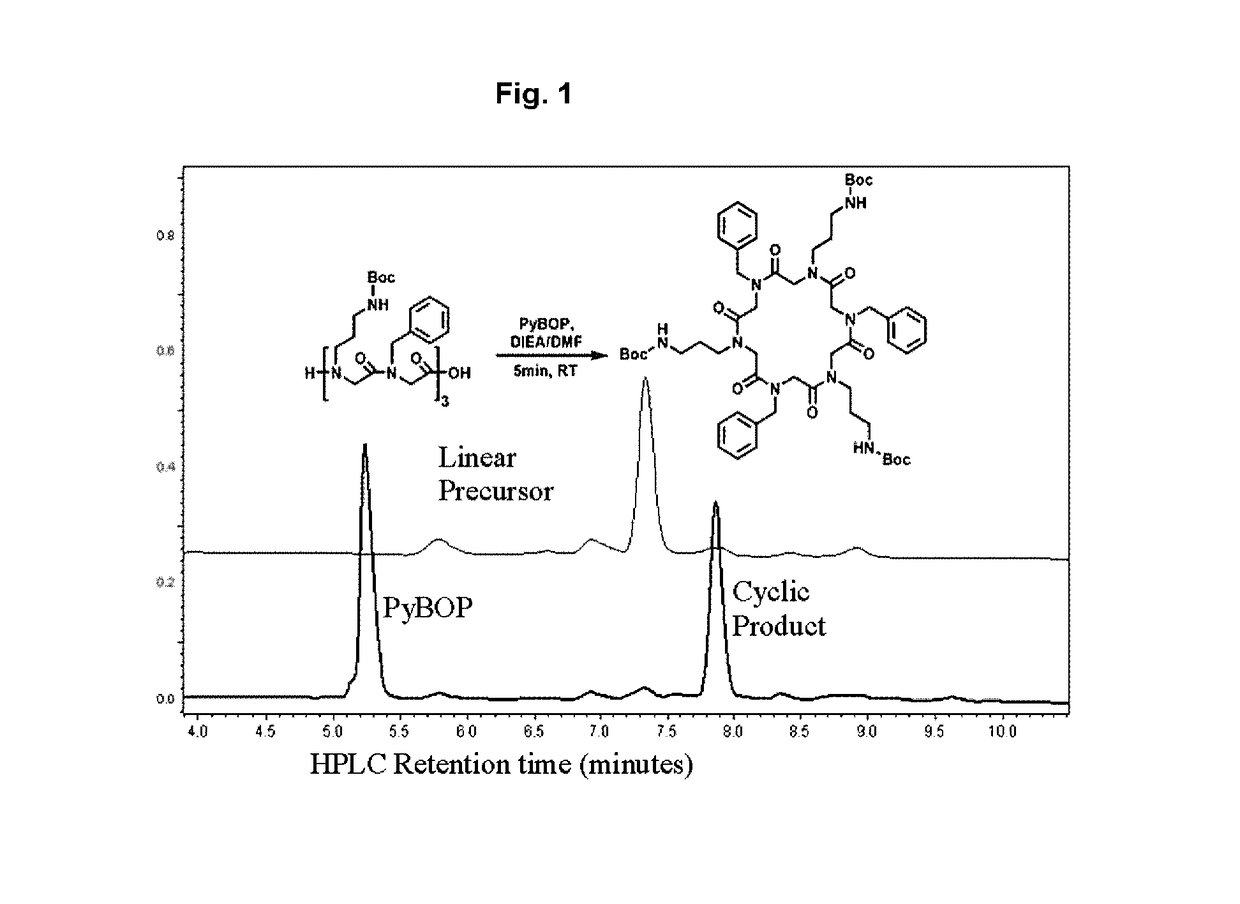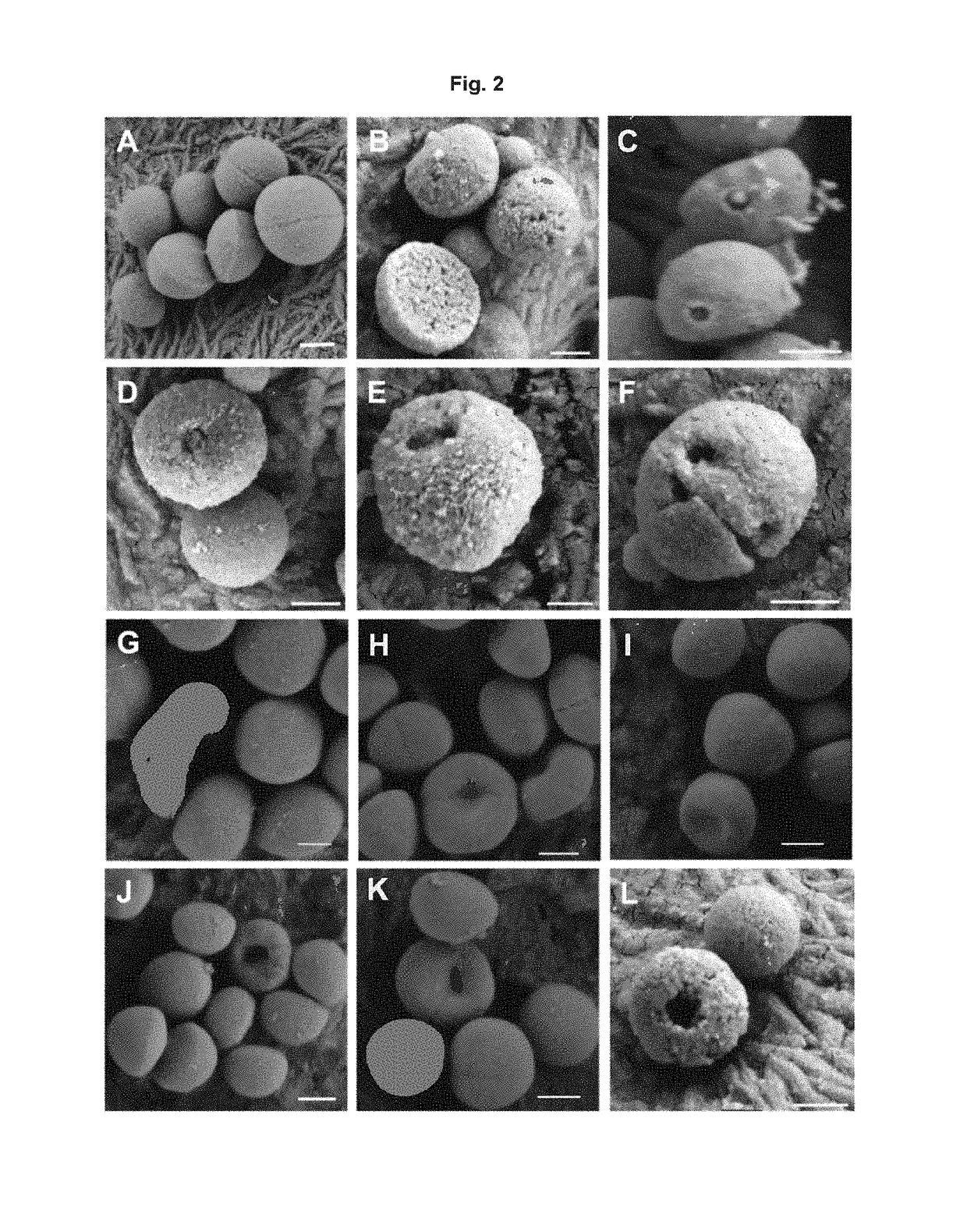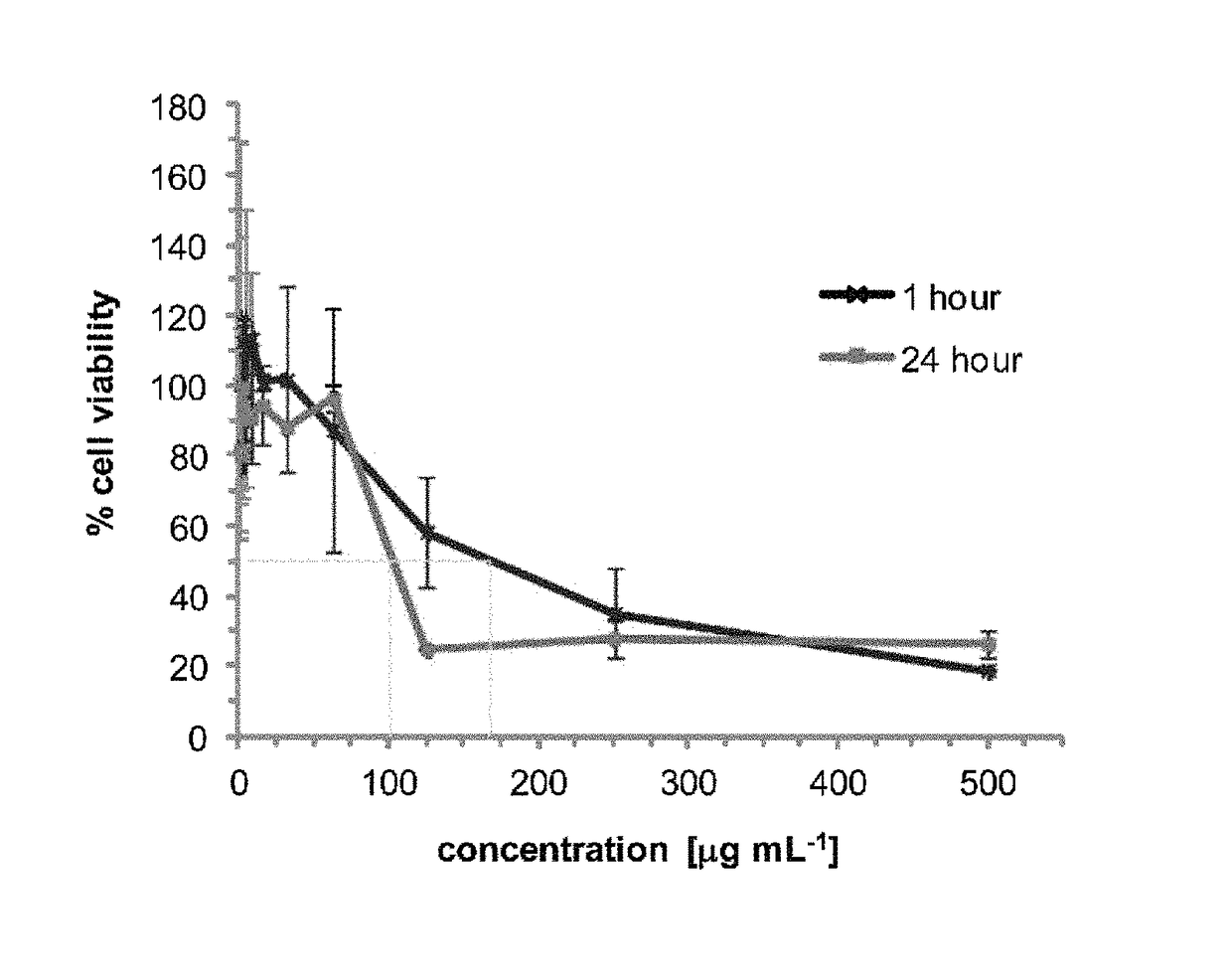Cyclic peptoid oligomers, pharmaceutical compositions and methods of using the same
a technology of cyclic peptoid oligomers and pharmaceutical compositions, which is applied in the direction of cyclic peptide ingredients, antibacterial agents, peptides, etc., can solve the problems of more than $2 billion in health care costs, the discovery of new anti-infective agents has been disappointingly slow, and the stage for a global public health crisis is approaching. , to achieve the effect of improving antibacterial activity, potent and selective antimicrobials, and enhanced antibacterial activity
- Summary
- Abstract
- Description
- Claims
- Application Information
AI Technical Summary
Benefits of technology
Problems solved by technology
Method used
Image
Examples
example 1
[0393]Antimicrobial Activity Screening.
[0394]The cyclic pentamers and hexamers were evaluated for antimicrobial activity against S. aureus LAC, a clinical isolate of MRSA. The antimicrobial assay was conducted using previously published procedures (CLSI Broth Macrodilution Procedures CLSI M07-A7). Compound C3 (Table 1, ID 20), which was previously identified as a “hit” compound due to its potent antimicrobial activity was included as a reference compound. The results reveal that cyclic peptoid hexamers and pentamers can display potent antimicrobial activity, with some oligomers exhibiting MIC values of 3.9 μg mL−1. (Table 2, and FIG. 11). The antimicrobial activities of the oligomers in the library were also observed to maximize at 3.9 μg mL−1, similar to other peptidomimetic antimicrobial systems (Porter et al, 2005, J Am Chem Soc 127, 11516-11529).
[0395]
TABLE 2Antimicrobial activity of representative peptoid oligomersMIC#CompoundStructure(μg mL−1)20 (C3)C(NapNdp)33.9-7.823C(NapNpm...
example 2
[0428]In order to assess the ability of the peptoid oligomers described herein to act as antimalarial agents, fluorescence-based in vitro antimalarial assays were performed. The protocol used to perform these assays was adapted from that described by Smilkstein et al. (2004, Antimicrobial Agents and Chemotherapy 48:1803-1806; the entire content of which is incorporated herein by reference) and is set forth below.
Determining Drug Toxicity on P. falciparum Parasites Using SYBR Green Method
[0429]Reagents Required:
[0430]Plasmodium falciparum 3D7 erythrocytic asexual culture, at 5% hematocrit maintained in the atmospheric conditions of 1% oxygen, 5% carbon dioxide and 94% nitrogen; complete media (RPMI 1640, 25 mM HEPES, 10 ug / ml gentamycin, 0.5 mM hypoxanthine, pH 6.75), supplemented with 25 mM sodium bicarbonate and 0.5% Albumax II; SYBR Green I nucleic acid staining dye (Molecular Probes), 10000× stock, stored at −20° C.; and Lysis Buffer.
[0431]Lysis Buffer:
[0432]20 mM Tris, pH 7.5; 5...
example 3
[0445]Antimicrobial Activity.
[0446]Antimicrobial susceptibility assays were conducted in 96-well plates using the broth microdilution procedure outlined herein. Screening against Staphylococcus aureus LAC was performed in LB (Luria-Bertani) medium. Experiments were conducted in three independent replicates of three trials.
[0447]Time-to-Kill Assay.
[0448]The kinetics of antimicrobial activity were evaluated while incubating the bacteria with MIC levels of each peptoid. At specified time points, aliquots were removed and diluted in LB media in 10-fold increments. A 20 μL sample of each diluted aliquot was plated on LB agar plates and incubated overnight at 37° C. Bacterial colonies were manually counted and the colony forming units per mL (CFU / mL) were determined. Results are the averages of three trials.
[0449]Scanning Electron Microscopy.
[0450]Samples for imaging were prepared and analyzed as described herein. Briefly, treated cells were collected by centrifugation at 21,000 G and was...
PUM
| Property | Measurement | Unit |
|---|---|---|
| total volume | aaaaa | aaaaa |
| concentration | aaaaa | aaaaa |
| temperatures | aaaaa | aaaaa |
Abstract
Description
Claims
Application Information
 Login to View More
Login to View More - R&D
- Intellectual Property
- Life Sciences
- Materials
- Tech Scout
- Unparalleled Data Quality
- Higher Quality Content
- 60% Fewer Hallucinations
Browse by: Latest US Patents, China's latest patents, Technical Efficacy Thesaurus, Application Domain, Technology Topic, Popular Technical Reports.
© 2025 PatSnap. All rights reserved.Legal|Privacy policy|Modern Slavery Act Transparency Statement|Sitemap|About US| Contact US: help@patsnap.com



